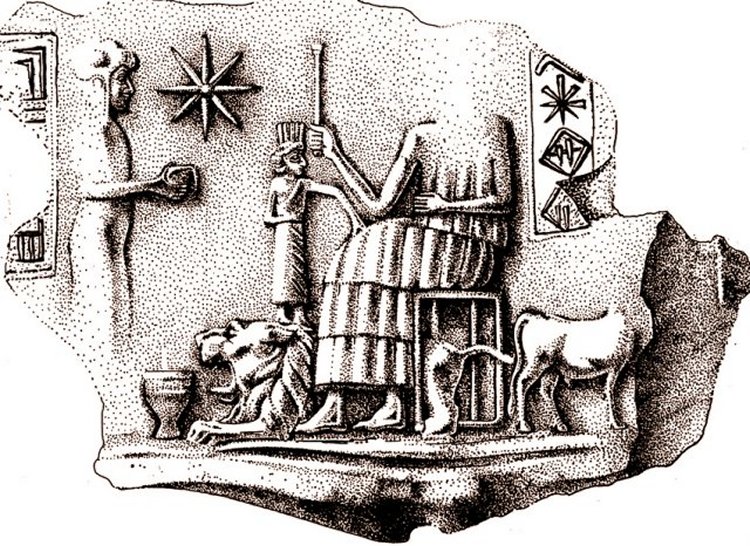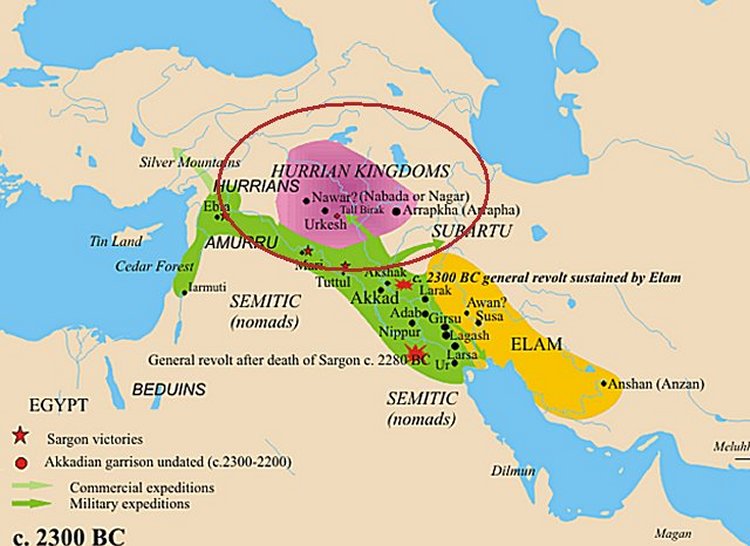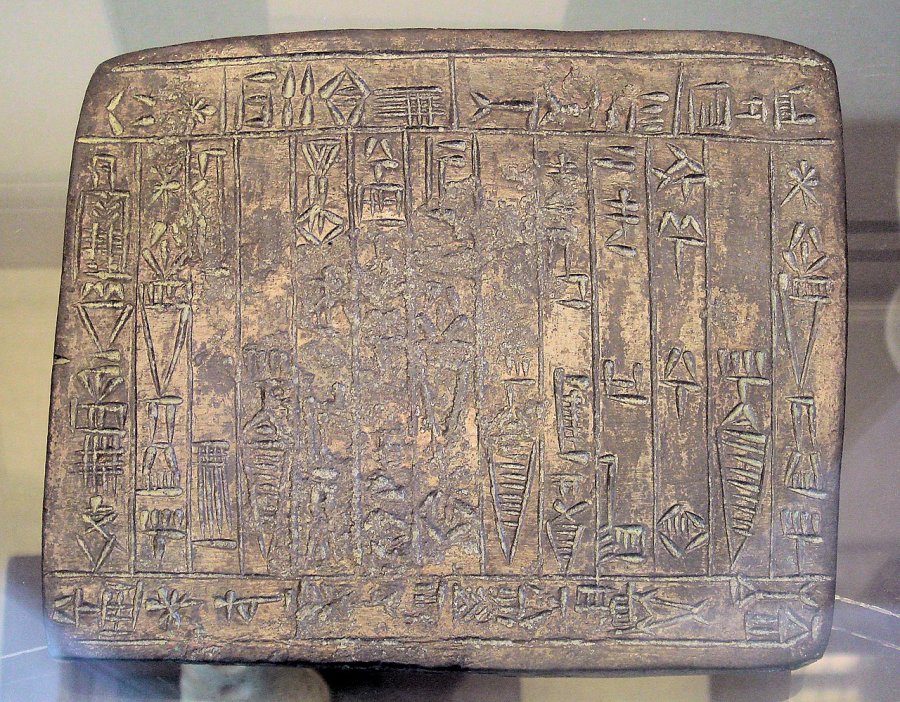Ancient City Of Urkesh – Home Of Kumarbi – The Foremost Son Of Anu
A. Sutherland - AncientPages.com - Tell Mozan is the site of the ancient city of Urkesh, mentioned in both historical records and myths. It's located in the foothills of the Taurus Mountains in Al-Hasakah Governorate, northeastern Syria.
It was founded during the fourth millennium BC possibly by the Hurrians on a site which appears to have been inhabited previously for a few centuries.
The beginnings of Urkesh are as yet unknown, but it is known they date back to at least the early part of the fourth millennium BC and occupied the area - of both the plains and mountainous hinterland in what is today portions of Syria, Iraq, and Turkey.
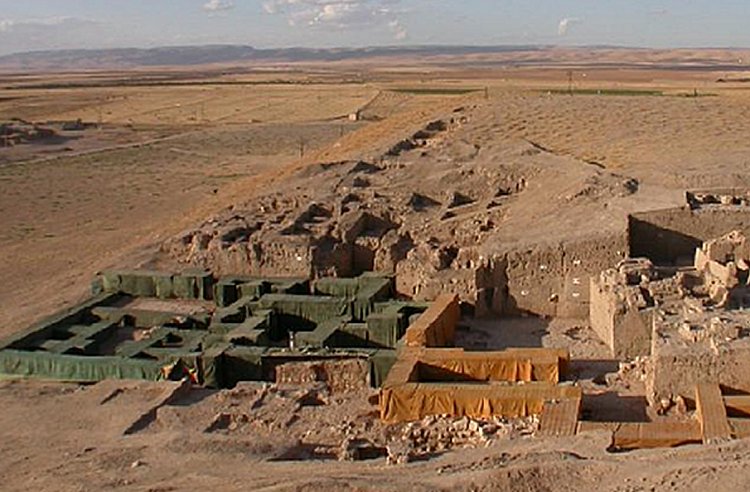 The large royal palace at Urkesh, which was still being excavated in 2010, has yielded written evidence which allowed it to be identified. Photo credits: Urkesh.org
The large royal palace at Urkesh, which was still being excavated in 2010, has yielded written evidence which allowed it to be identified. Photo credits: Urkesh.org
The discovery of Urkesh has pushed back the earliest evidence for the Hurrians into ¨the third millennium., the civilization - in many ways alternative to that of the Sumerians, the Akkadians, and the Amorites.
However, it's also unknown civilization with language, which is unique and totally unrelated to any other known ancient or living language and the Hurrian texts from Urkesh are only the earliest ones.
It was the main center of the Hurrians, who celebrated it in their countless myths as the home of the father of the gods, Kumarbi - the foremost son of Anu (the sky), identified by the Hurrians with Sumerian Enlil.
Urkesh was also the capital of a kingdom that controlled the highlands immediately to the north where the supplies of copper were located that made the city wealthy and rich.
The Hurrian population died out thousands of years ago, but the modern inhabitants of the area have not forgotten their ancestors from the ancient past.
For the last 30 years, archaeologists conducted excavations at Tell Mozan, ancient Urkesh, and these not only placed this ancient site in northeastern Syria but also have brought to light Tell Mozan/Urkesh and their inhabitants - the Hurrians, an unknown civilization of the ancient Near East.
Foundation tablet. Dedication to God Nergal by Hurrian king Atalshen, king of Urkish and Nawar, Habur Bassin, circa 2000 BC. Louvre Museum AO 5678. "Of Nergal the lord of Hawalum, Atal-shen, the caring shepherd, the king of Urkesh and Nawar, the son of Sadar-mat the king, is the builder of the temple of Nergal, the one who overcomes opposition. Let Shamash and Ishtar destroy the seeds of whoever removes this tablet. Shaum-shen is the craftsman. source
Among the most important finds revealed by the Mozan/Urkesh excavations, was the discovery of a beautiful sculptural image of a horse head dating from the middle of the third Millenium BC.
Also, subsequent findings showed more representations of horses, possibly continuing the same Hurro-Urartian tradition. It is believed that horses were domestic animals, especially because the diggings revealed a number of horse figurines coming from the storeroom inside king Tupkish’s palace (about 2200 BC).
These numerous figurines, which belong to the following period of the history of Urkesh in the last quarter of the 3rd Millennium BC, make it clear that the horse was extremely important in the life of this ancient society.
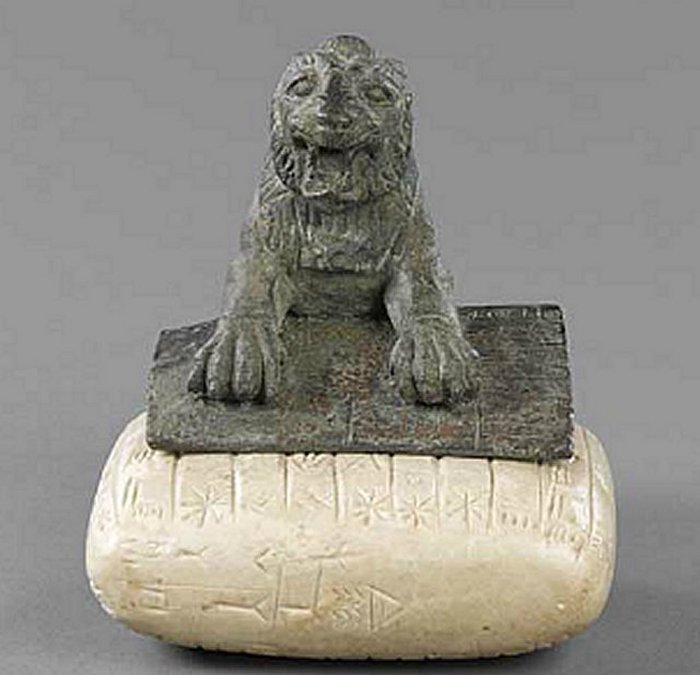
The Louvre lion of Tish-atal and an accompanying stone tablet bearing the earliest known text in Hurrian Photo credit: Louvre
Particularly interesting seem horse figurines showing the harness, thus documenting the use of horses in transportation. Written documents from the Palace have given us the name not only of the city and kingdom of Urkesh, but also of its king, Tupkish, and queen, Uqnitum. The powerful witness of writing also tells us that one of the daughters of Naram-Sin, the famous Mesopotamian king, lived in Urkesh.
And next to the Palace, UCLA Georgio Buccellati and Marilyn Kelly-Buccellatia and their team excavated a deep underground shaft that was one of the most awe-filled monuments of the Hurrians – the 'Passage to the Netherworld'.
Further excavations have revealed compelling evidence that the Hurrians not only strongly influenced the language, culture, and religion of later peoples but also may have been present 1,000 years earlier--just as nearby Mesopotamians began to create the first cities.
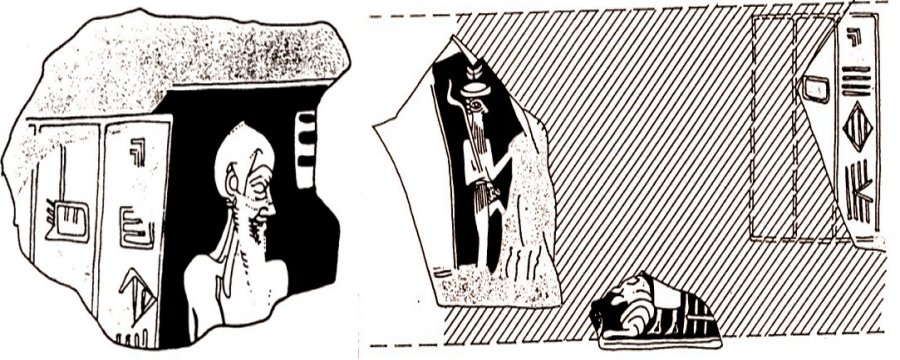
Left: Warrior with a helmet. Urkesh. Credits: G. Buccellati, November 2002. Right: God with a raised foot. Credits: G. Buccellati, November 2002
Kumarbi's temple, one of the most important buildings, was left in ruins that date back to about 2400 BC. The god Kumarbi's temple was most probably built by one of the earliest known Hurrian rulers - the king Tish-atal, c. 21st century BC of Urkesh during the Third Dynasty of Ur.
There are many unanswered questions regarding the Hurrians, but one thing is for sure; these ancient people were far more than just another wandering tribe in the fractious Middle East.
Written by – A. Sutherland AncientPages.com Staff Writer
Copyright © AncientPages.com All rights reserved. This material may not be published, broadcast, rewritten or redistributed in whole or part without the express written permission of AncientPages.com
Expand for referencesMore From Ancient Pages
-
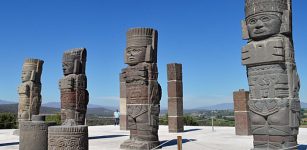 Obscure History Of Atlantean Statues In Ancient Toltecs’ City Of Tula
Artifacts | Oct 19, 2020
Obscure History Of Atlantean Statues In Ancient Toltecs’ City Of Tula
Artifacts | Oct 19, 2020 -
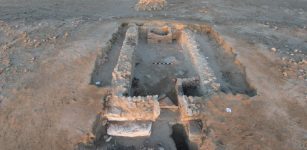 Unusually Arranged Skeletons And Artifacts Found Inside A 1,500-Year-Old Tomb In Berenice Troglodytica, Egypt
News | May 27, 2022
Unusually Arranged Skeletons And Artifacts Found Inside A 1,500-Year-Old Tomb In Berenice Troglodytica, Egypt
News | May 27, 2022 -
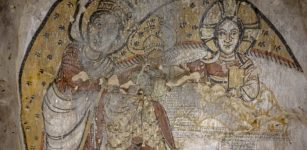 New, Unique Wall Paintings Discovered In Old Dongola, Sudan
Archaeology | Apr 10, 2023
New, Unique Wall Paintings Discovered In Old Dongola, Sudan
Archaeology | Apr 10, 2023 -
 First European Farmers’ Heights Did Not Meet Expectations
Archaeology | Apr 8, 2022
First European Farmers’ Heights Did Not Meet Expectations
Archaeology | Apr 8, 2022 -
 The Day When The Sun Did Not Come Out – Bizarre Event In 1780, New England
Featured Stories | Apr 18, 2023
The Day When The Sun Did Not Come Out – Bizarre Event In 1780, New England
Featured Stories | Apr 18, 2023 -
 Author’s Encounter With A Mysterious Not Of This World Entity Inside Callixtus Catacombs
Featured Stories | Apr 5, 2020
Author’s Encounter With A Mysterious Not Of This World Entity Inside Callixtus Catacombs
Featured Stories | Apr 5, 2020 -
 Egtved Girl’s Unique 3,400-Year-Old Style Of Dress
Featured Stories | Nov 17, 2023
Egtved Girl’s Unique 3,400-Year-Old Style Of Dress
Featured Stories | Nov 17, 2023 -
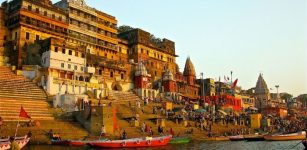 4,000-Year-Old Village Mentioned In Ancient Texts Unearthed Near Sacred City Of Varanasi
Archaeology | Mar 13, 2020
4,000-Year-Old Village Mentioned In Ancient Texts Unearthed Near Sacred City Of Varanasi
Archaeology | Mar 13, 2020 -
 What Caused The Unexplained Change In Europeans’ DNA 4000-5000 Years Ago? Scientists Say The Genetic Turnover Remains A Mystery
Archaeology | Aug 27, 2014
What Caused The Unexplained Change In Europeans’ DNA 4000-5000 Years Ago? Scientists Say The Genetic Turnover Remains A Mystery
Archaeology | Aug 27, 2014 -
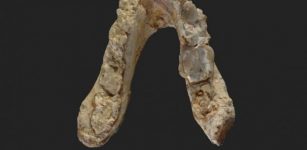 7.2-Million-Year-Old Pre-Human Remains Suggest Our First Ancestor Came From Europe Not Africa
Archaeology | May 23, 2017
7.2-Million-Year-Old Pre-Human Remains Suggest Our First Ancestor Came From Europe Not Africa
Archaeology | May 23, 2017 -
 Secrets Of The Ancient Children Of The Moon Whose God Came From Outer Space In A Shining Flying Disc
Featured Stories | Jun 1, 2020
Secrets Of The Ancient Children Of The Moon Whose God Came From Outer Space In A Shining Flying Disc
Featured Stories | Jun 1, 2020 -
 Ancient DNA Solves The Mystery Of Mitochondrial Eve And Human Evolution?
Archaeology | Sep 21, 2022
Ancient DNA Solves The Mystery Of Mitochondrial Eve And Human Evolution?
Archaeology | Sep 21, 2022 -
 Mystery Of The Blue Blood Gods: Why Did They Have A Different Blood And Skin Color?
Featured Stories | Jun 18, 2015
Mystery Of The Blue Blood Gods: Why Did They Have A Different Blood And Skin Color?
Featured Stories | Jun 18, 2015 -
 Huginn and Muninn: Powerful Ravens Of Odin, Supreme God In Asgard In Norse Mythology
Featured Stories | Dec 7, 2017
Huginn and Muninn: Powerful Ravens Of Odin, Supreme God In Asgard In Norse Mythology
Featured Stories | Dec 7, 2017 -
 Burnt Food Remains In Neolithic Cooking Pot Sheds Light On 5,000-Year-Old Food Preparation
Archaeology | Jan 23, 2024
Burnt Food Remains In Neolithic Cooking Pot Sheds Light On 5,000-Year-Old Food Preparation
Archaeology | Jan 23, 2024 -
 On This Day In History: Battle Of Rain Was Fought On April 15, 1632, During The Thirty Years’ War
News | Apr 15, 2016
On This Day In History: Battle Of Rain Was Fought On April 15, 1632, During The Thirty Years’ War
News | Apr 15, 2016 -
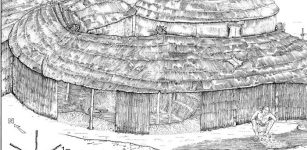 What Ancient Dung Reveals About Epipaleolithic Animal Tending
Archaeology | Sep 15, 2022
What Ancient Dung Reveals About Epipaleolithic Animal Tending
Archaeology | Sep 15, 2022 -
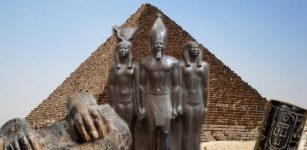 Pharaoh Menkaure – Egyptian Ruler Who Tried To Outsmart Fate
Featured Stories | Nov 18, 2020
Pharaoh Menkaure – Egyptian Ruler Who Tried To Outsmart Fate
Featured Stories | Nov 18, 2020 -
 Why Did Christian Viking King Harald Bluetooth Carry A Hammer Of Thor Amulet?
Artifacts | Apr 20, 2018
Why Did Christian Viking King Harald Bluetooth Carry A Hammer Of Thor Amulet?
Artifacts | Apr 20, 2018 -
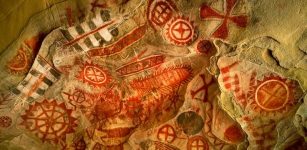 Amazing Ancient Chumash Cave Paintings In California Offer Insight Into Ancient Shamanism And Supernatural Beliefs
Civilizations | Nov 5, 2018
Amazing Ancient Chumash Cave Paintings In California Offer Insight Into Ancient Shamanism And Supernatural Beliefs
Civilizations | Nov 5, 2018

